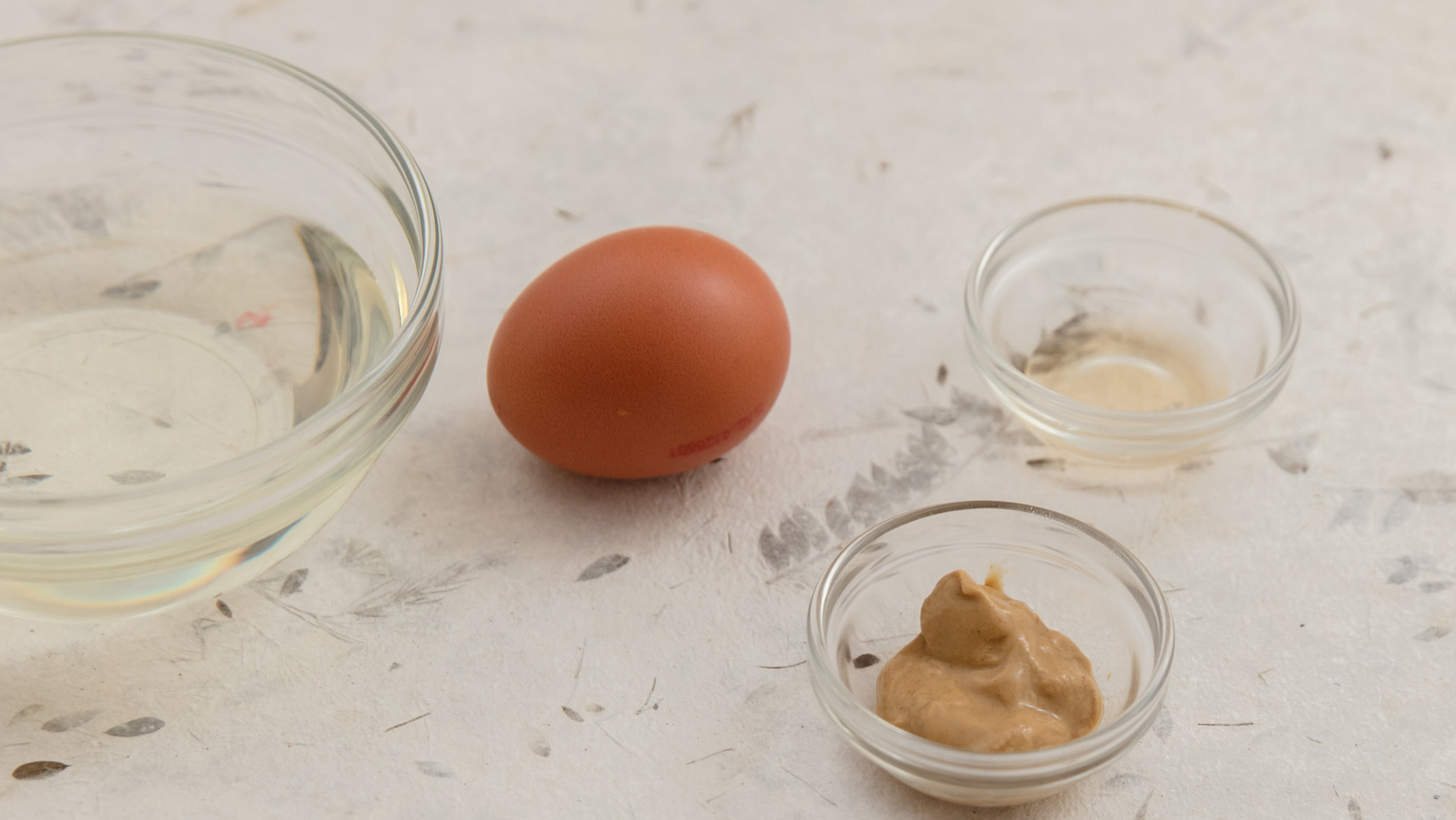What Is Mayo Made Out Of?
Mayonnaise is a sauce. It's a condiment. It's a classic of French haute cuisine. It's a dip for French fries. It's a lubricant for sandwiches and salads. It's the soul food of WASP-y people. It's a political cause. It's the source of an actual phobia and endless trauma. Those who deride it claim that it's greasy white glop. Those with more discerning palates describe it as creamy and pale yellow.
But what is it, exactly?
Technically, it's an emulsion of oil and an egg yolk, seasoned, if you like, with a dab of mustard, a sprinkle of salt, and a few drops of vinegar or lemon juice. An emulsion is what happens when two elements that don't get along—oil and water are the classics—are forced together in the service of something greater than themselves, like a salad dressing. Fortunately for mayonnaise (if we're going to pretend that pantry ingredients have feelings, but it makes this story much more interesting if we do), the egg yolk, the source of water, also contains lecithin. Think of lecithin as the mutual friend that both oil and water like and want to hang out with; it can form a bond with water at one end and fat (oil) at the other. Because of lecithin, the oil and water will do their best to get along, at least for a few days, say the length of a wedding weekend. In order to bring the egg yolk and oil together, you'll have to integrate them slowly, one drop at a time, and whisk constantly. On second thought, maybe this part of the process is more like integrating a new cat into a household where one or more cats already lives: careful, patient, and vigilant. If you let up your guard for a second, all hell will break loose. Gwen Ihnat experimented with mayonnaise-making for The Takeout last year and assembled many useful tips from professional chefs, which you can read here.
It's unclear who was insane enough to come up with mayonnaise in the first place. The French take credit for it, because of course they do. In their version of events, back in 1756 during the Seven Years War, the Duc de Richelieu laid siege to the town of Port Mahon on the island of Minorca off the eastern coast of Spain. In celebration, and also because it was a siege and so there was nothing else to eat, the duc's chef created a brand-new sauce. Et voila, mahonnaise!
Another theory developed that a small town on a Spanish island could not possibly be the source of such a grand invention, and the sauce was originally named bayonnaise after the French city of Bayonne.
The Spanish, naturally, take exception and claim that they were the ones who invented the sauce. Well, technically it was the Catalans, who speak their own language and have been declaring their independence from Spain for nearly a century. Anyway, they'd been mixing up an emulsion of salt, garlic, and oil for centuries and started adding eggs around the fourteenth century. They called this alli-i-oli (translation: "garlic in oil")—which sounds a lot like aioli, mayonnaise's garlicky Provençal cousin.
Can we just agree that anything this finicky must have taken centuries to perfect?
Alas, mayonnaise never attained a spot among the five mother sauces of French cuisine, but according to Julia Child and Simone Beck in Mastering The Art Of French Cooking, it's still the head of a very large and robust family that includes herbed mayonnaise, green mayonnaise (it gets its color from spinach), rémoulade and tartar sauces, aioli, and the black sheep, mayonnaise collée, which contains gelatin. According to modern chefs, you can add whatever the hell you want to it.
Samin Nosrat claims in her great cookbook Salt Fat Acid Heat that if you "follow [the] rules,... you'll see that mayonnaise is difficult (but not impossible) to ruin." But she also claims that "Magic keeps it together." If you happen to run short of magic and your mayonnaise breaks (that is, separates into its un-emulsified components), Child and Beck suggest fixing it by beating together a teaspoon of mustard and a tablespoon of mayonnaise in a warm mixing bowl and then mixing in the rest of the mayo one teaspoon at a time. This sounds only slightly less laborious than making a brand-new batch.
